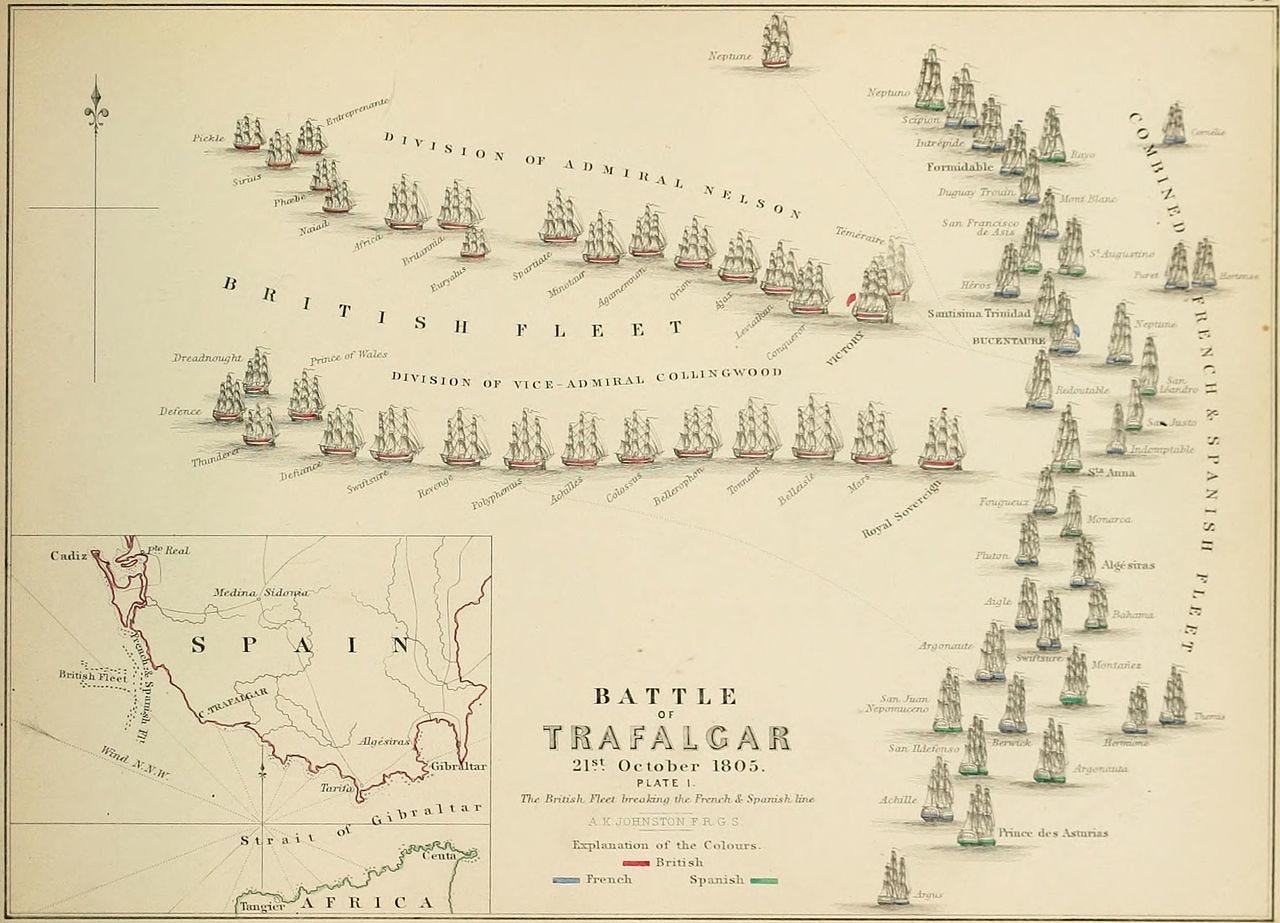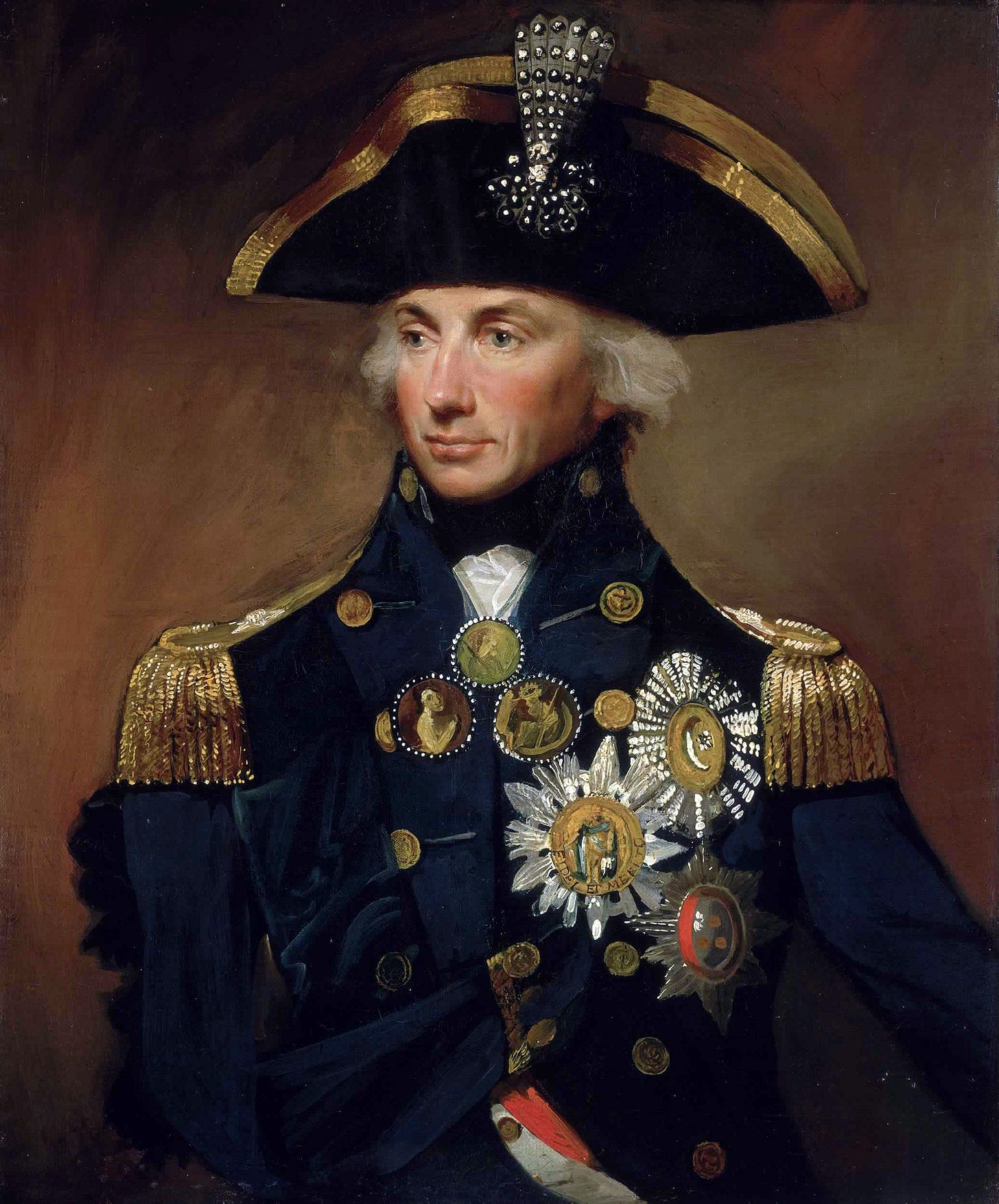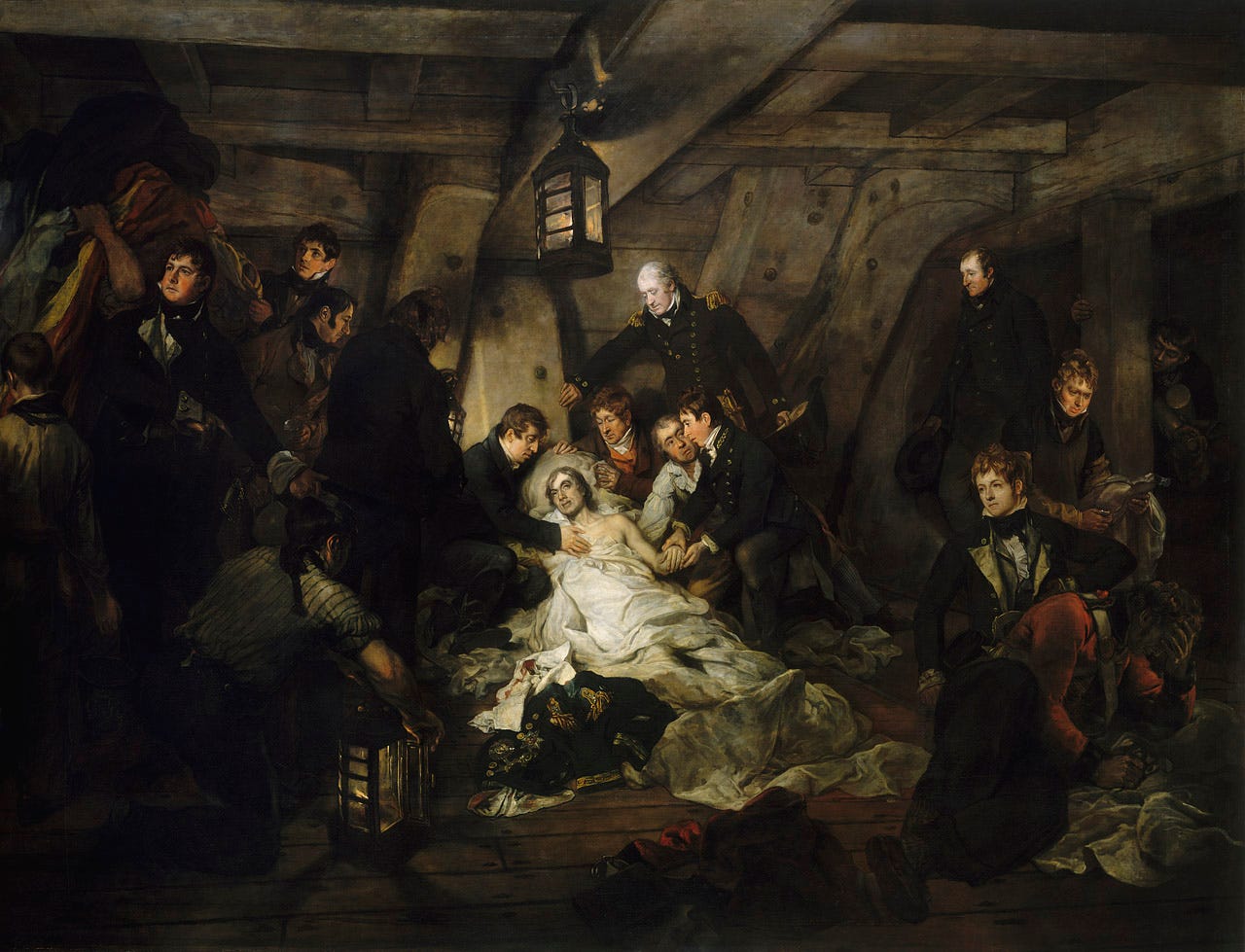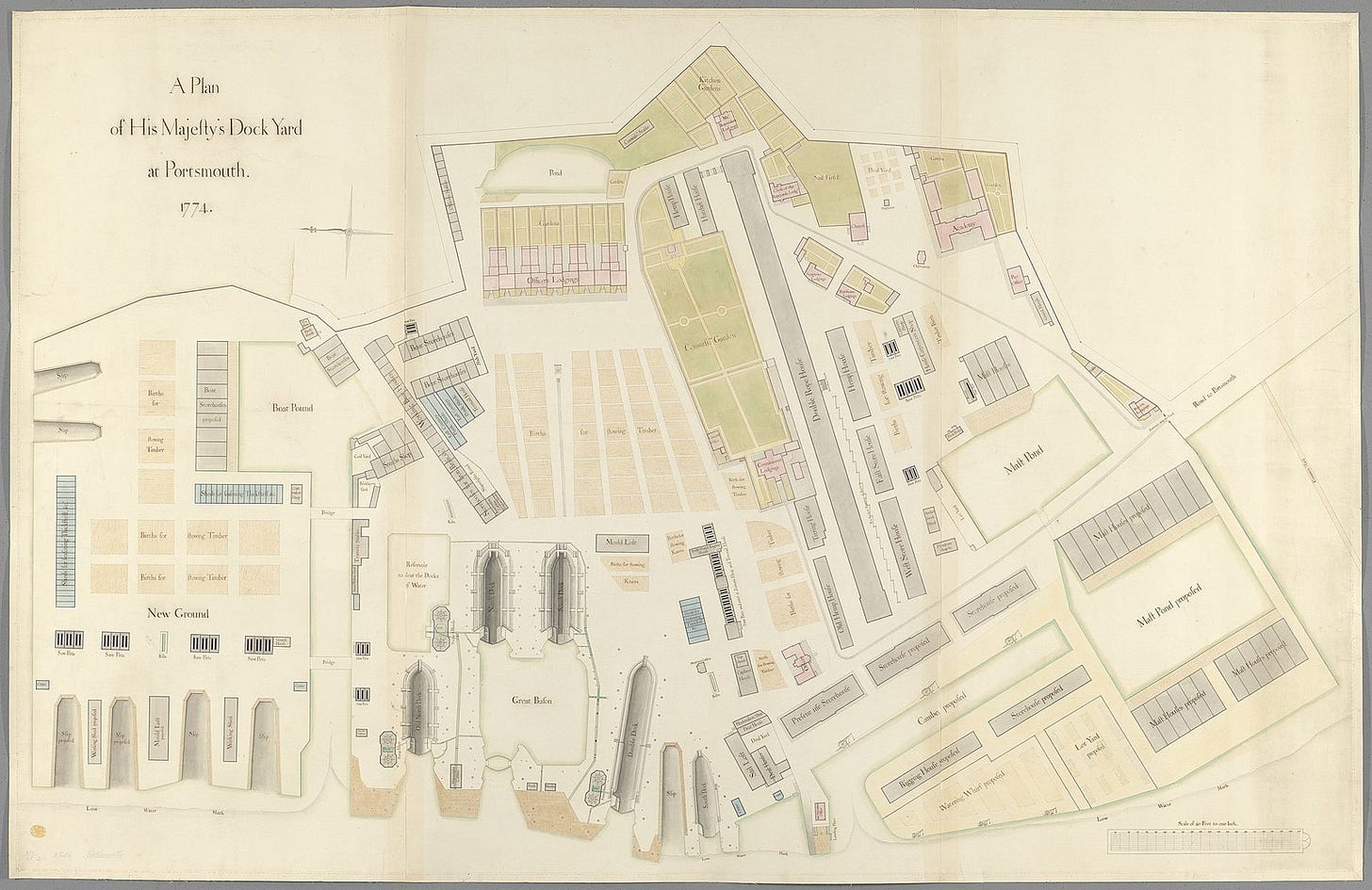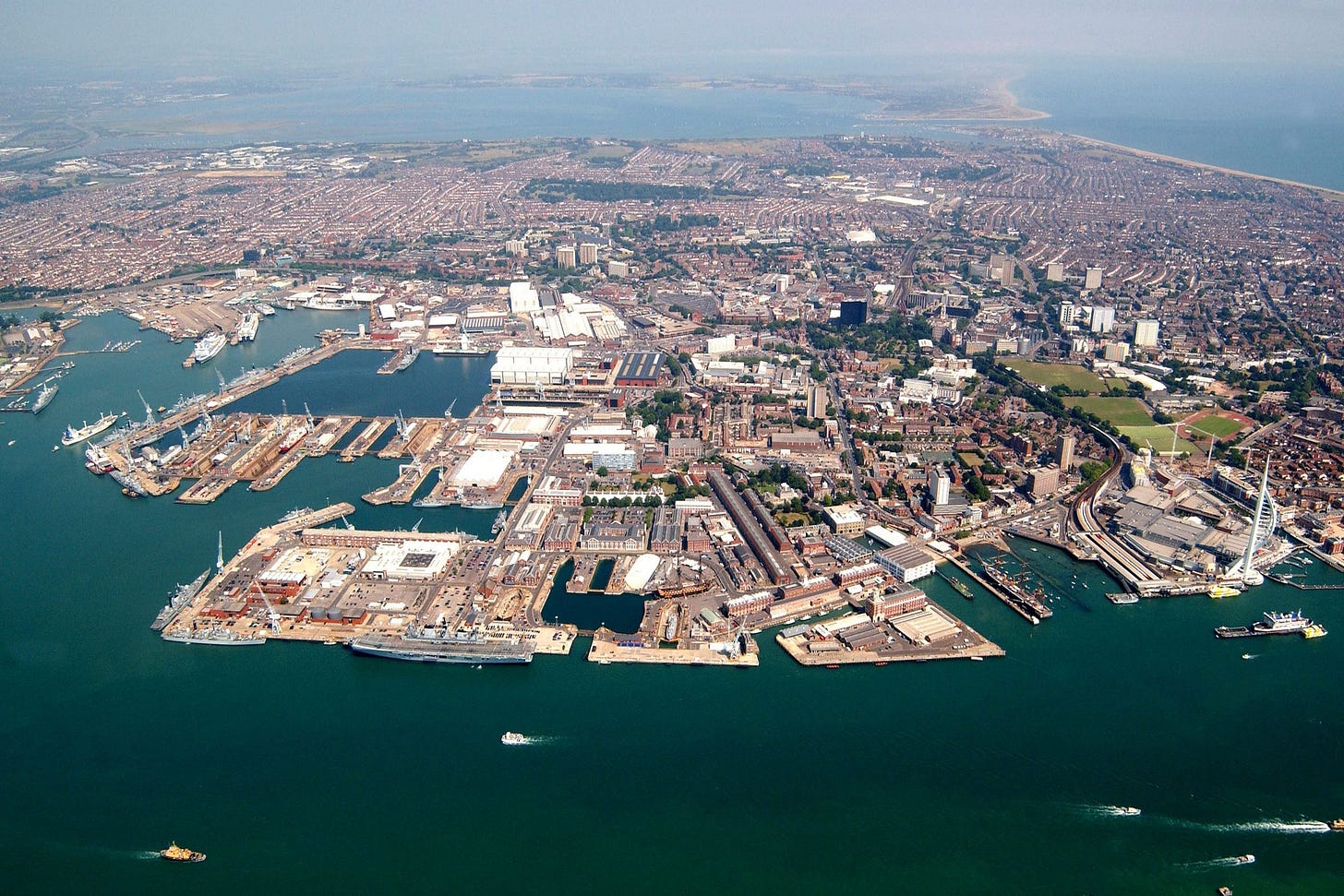I have been waiting to post this update for what feels like months. But today, a large crate finally arrived at my studio in Tucson. In many ways, it is the last piece of the puzzle – at least in terms of materials – that will allow us to complete our edition of Master and Commander.
As part of our edition of Master and Commander, we are delighted to be able to offer 27 lettered copies that use wood salvaged from HMS Victory as the covers of the book. Victory is the most tangible connection between the Royal Navy of Jack Aubrey’s time and the 21st century. So, when planning a lettered edition of Master and Commander, the tantalizing possibility of using materials sourced from her was irresistible.
History of HMS Victory, Nelson, and Trafalgar
HMS Victory is arguably the most historic ship still in commission, with only the USS Constitution even coming close to matching its rich history. Victory served as flagship at many of the most important naval engagements of the late 18th and early 19th centuries – the 1778 and 1780 Battles of Ushant, the 1782 Siege of Gibraltar, the 1796 Battle of Cape St. Vincent, and, of course, the 1805 Battle of Trafalgar, a decisive turning point in the war against Napoleon.
On October 21, 1805, Victory lead a line of 27 ships-of-the-line into the heart of the combined French and Spanish fleet. Breaking the enemy lines, Nelson’s fleet was able to engage the enemy in a general melee, thereby creating the conditions for a resounding victory.
However, this decisive sea battle of the Napoleonic Wars came at the cost of the loss of one of the greatest naval tacticians of all time: Vice-Admiral Horatio Nelson. Commanding the British fleet from the deck of HMS Victory, Nelson was felled by a musket shot fired from the French Redoutable. After a few hours under the care of the ship surgeon, Nelson succumbed to his wound.
As part of the national myth-making – verging on hagiography – that began immediately upon the return of Nelson’s body to London, his funeral was one of the largest and most ornate in history. Almost immediately, artists took up the subject of Nelson and Trafalgar with some of England’s greatest 19th-century artists depicted Victory.
Two years before Trafalgar, John Constable hired a boat to take him to the Medway in Kent to sketch Victory and other ships. In a letter to his friend John Dunthorne Senior dated May 23, 1803, he described Victory as "the flower of the fleet." Despite this reference, the sketches were lost for two centuries, emerging in 2003 when they were found hanging in the home of one of Constable’s descendants. When they were auctioned later that year, they fetched more than £350,000, a record for any of his pencil sketches.
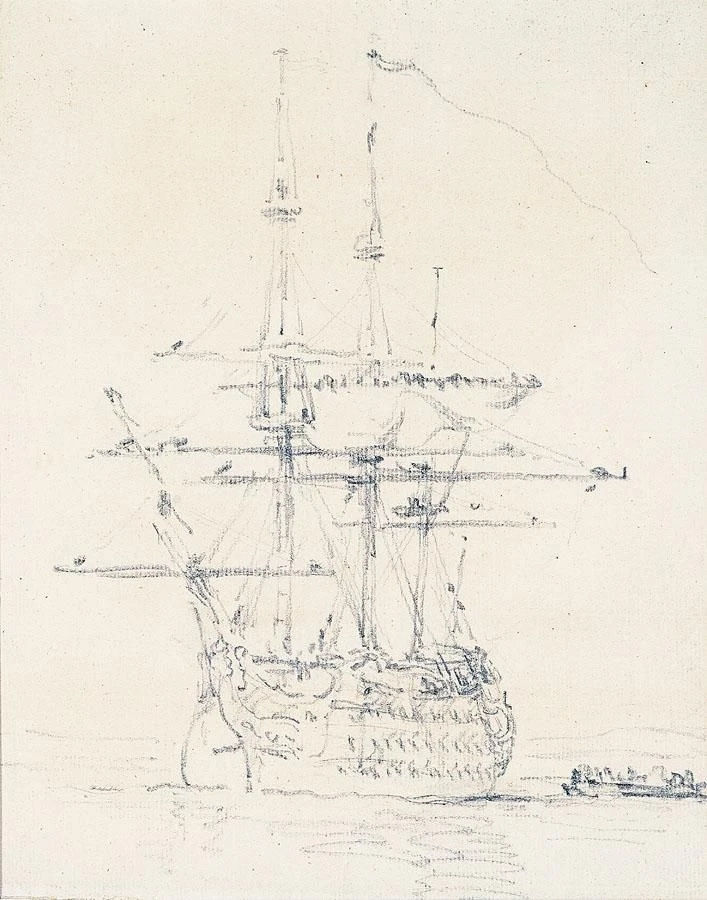

It is interesting to note the spontaneity and energy of Constable’s sketches, providing an important inspiration for the style of illustrations created by Carlos Kirovsky for our edition of Master and Commander. After Trafalgar, Constable returned to the subject in his 1806 watercolor of Victory at trafalgar.

King George IV commissioned J.M.W. Turner’s remarkable The Battle of Trafalgar for St. James Palace. Turner’s largest ever painting (more than 8 feet tall and 12 feet wide), it shows Victory in a romantic light, the famous flag signal “England expects that every man will do his duty” still flying well past the point at which more prosaic signals to the fleet would have broken out. Artistic license also sees Turner foreground the sinking of the French ship Redoubtable, despite the fact that it did not sink until the day following the battle.
Beginning with Arthur William Devis’ The Death of Nelson (1807), the myth-making continued on and below deck. Devis – having attended the autopsy of Nelson aboard Victory – evokes a Renaissance religious painting with Nelson bathed in golden light.
This process of art creating a national narrative of the idealized hero continued for decades after Trafalgar, as artists continued to depict the courage and sacrifice of Nelson.
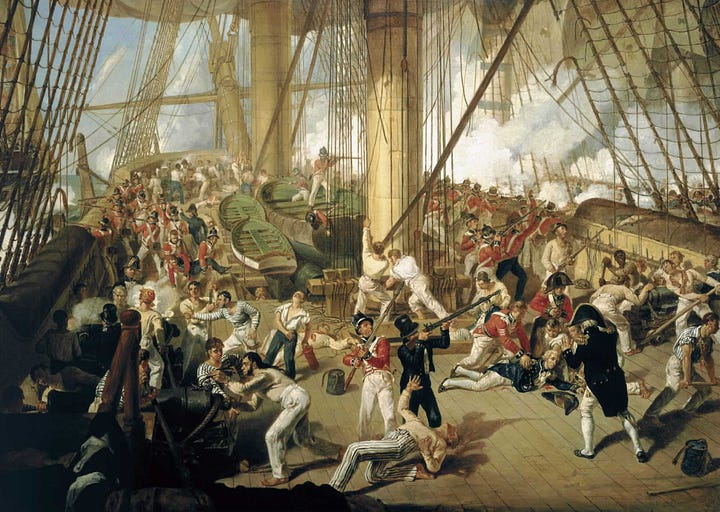

Today, Nelson and Victory continue to be central to life in London, quite literally. Trafalgar Square, with its monument to Nelson, is the official center of the city from which all distances from the city are officially measured. It is the location for countless tourists, political protests, cultural celebrations, and holiday festivities, all overseen by Admiral Nelson.

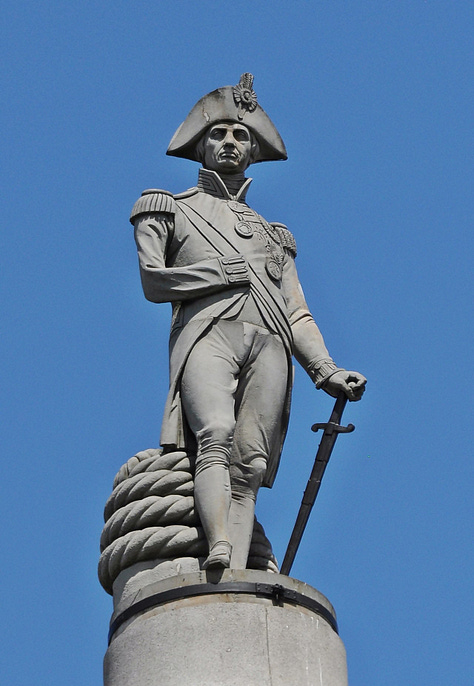

Jack Aubrey, Nelson, and Victory
As we all know, Jack Aubrey idolized Nelson. From his hat – which “out of love for Lord Nelson and a liking for the ways of his youth, he wore athwartships rather than fore and aft” (Treason’s Harbour) – to his hair – “which he wore loose and long as a tribute to Lord Nelson” (Master and Commander) – Jack sought to honor his hero through his own presentation. And for his ships, he preferred the Nelson chequer paint scheme.
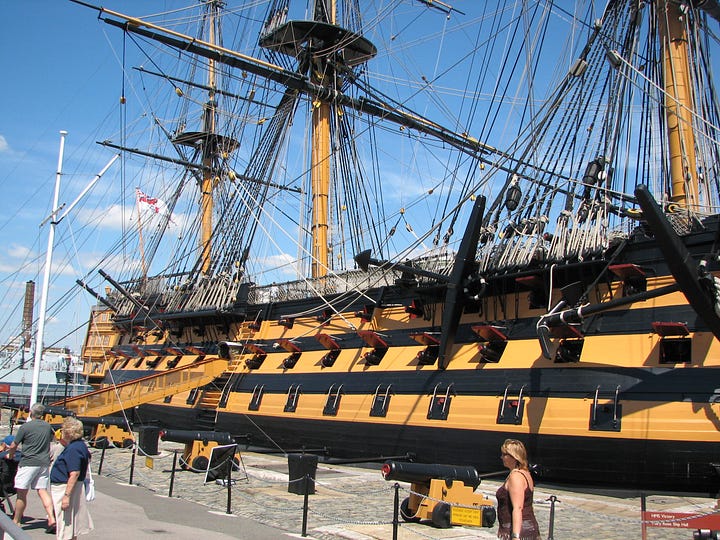
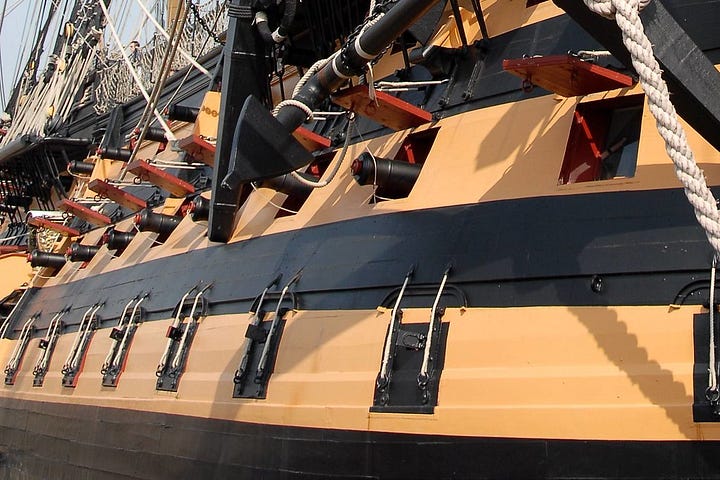
Beyond these aesthetic odes, many is the time that Jack relates his two encounters with Nelson himself:
Miss Smith… showed the keenest interest in the service: she knew almost nothing of it, alas, having always lived so far from the sea, but she had adored poor Lord Nelson and she had worn mourning for months after Trafalgar. Did Captain Aubrey share her admiration, and had he ever met the great man? ‘Yes, I do, and I did,’ he said, smiling with great benevolence, for there was no shorter way to Jack’s heart than a love for the service and an adoration of Nelson. ‘I had the honour of dining with him when I was a mere lieutenant: the first time he only said “May I trouble you for the salt?”, though he said it in the kindest way; but the second time he said “Never mind manoeuvres; always go straight at ’em”.’ (The Surgeon’s Mate)
It comes as no surprise, then, that Jack also admires Victory. In Post Captain, he redecorates the cabin of HMS Lively: ‘”let us see what we can do to the cabin to make it fit for a lady. Mr Simmons, while we are settling this, pray let the sailmaker start making a sailcloth carpet: black and white squares, exactly like the Victory. There is not a moment to be lost.”’
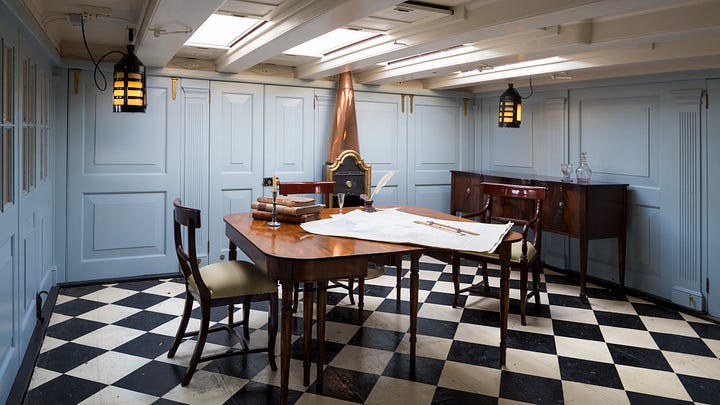
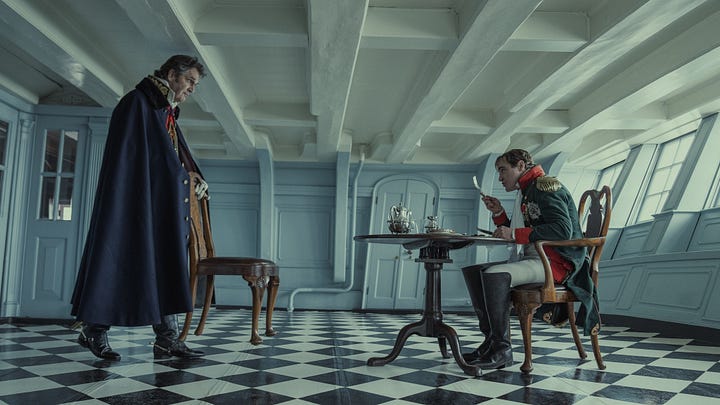
In The Commodore, he defends his command, HMS Bellona, against charges of being outdated: ‘you would not call her an old ship. Victory was laid down a year before, and she is pretty spry, I believe. She answered tolerably well at Trafalgar, they say.’
Given that HMS Victory serves as the most tangible link between the Royal Navy of Jack’s time and our own, as well as Jack’s affection for Nelson and his flag ship, it simply made sense to seek to incorporate a piece of this history in our edition of Master and Commander. Fortunately, this is a case when a “it can’t hurt to ask” attitude paid off.
Obtaining Historic Wood from HMS Victory
There was a bit of serendipity and good timing between our edition of Master and Commander and the work of the National Museum of the Royal Navy (NMRN). In mid-2022, just as I had begun the design work on our book, NMRN was beginning the largest conservation project in HMS Victory’s more than 250 years afloat. Planned to take almost a decade and costing an estimated £40 million/$50 million, this remarkable project is aimed at ensuring that Victory survives for many decades to come.
Breathing New Life into Victory
The protect her during the renovations, Victory has been braced and covered in scaffolding and tenting. Still open and accessible during what the NMRN calls “The Big Repair,” the public is being given an unprecedented look at the process of building and restoring a wooden ship in both the 18th and 21st centuries.
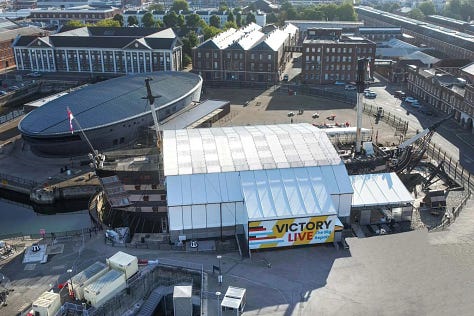
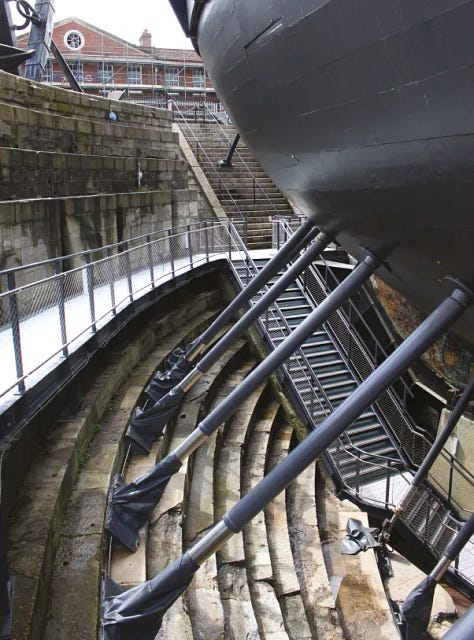
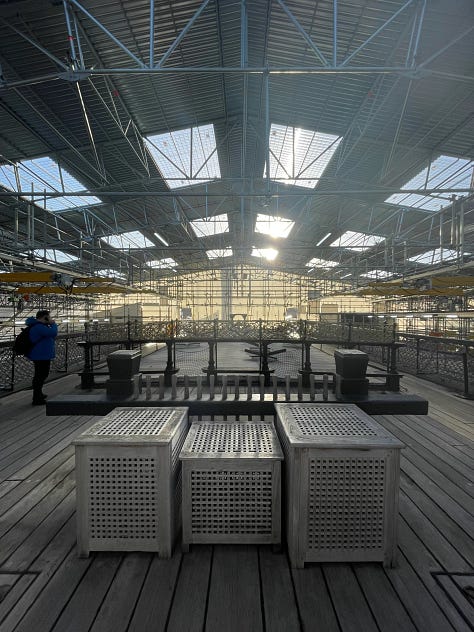
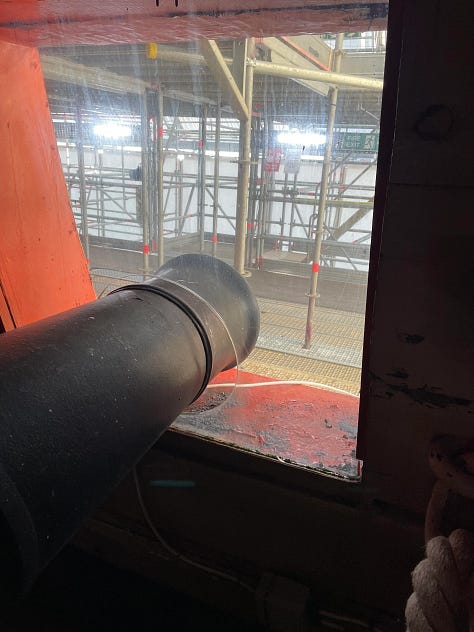


One thing that all wooden ships have in common is the need to replace worn, damaged and even rotting wood on a regular basis. On a ship of Victory’s age and condition, this meant that hundred or thousands of board feet of wood was being removed and replaced. In this case, the need was particularly dire. According to an article in The Maritime Executive (October 2023):
Andrew Baines, the project director, said: “Although a cursory look at Victory in early 2022 might have given the impression that the ship was in good condition, in reality a thin skin of paint and filler masked planking that was almost entirely rotten on the ship’s starboard side.
“As soon as the outer, sound, layer was removed, the team of shipwrights were confronted with material that no longer resembled timber and was much closer to potting compost.”
The decayed wood has been removed – but in doing so it’s revealed that the rotting had spread to the frames to a much greater extent than had been assumed, meaning more repair and replacement work.
And while traditional shipbuilding methods fared Victory well for most of her career, more recent restoration work – after 1955 – perhaps caused as much harm as good…Unfortunately, however, the materials and workmanship of the post-1955 material has helped contribute to the quantity of rot in the hull, and will largely be replaced,” Baines said.

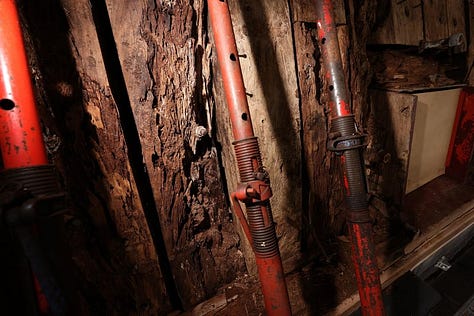
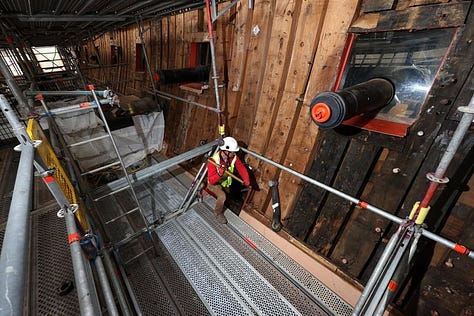

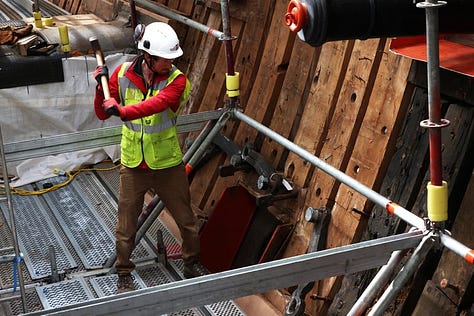
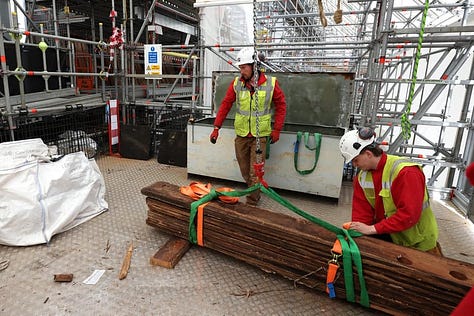
It is some of this wood – specifically, some of the “outer, sound, layer” of teak planks from the hull – that we will be using for our Victory Edition of Master and Commander. But how does it get from the shipwrights to our studio in Arizona? Well that involved two steps: Building a partnership with the National Museum of the Royal Navy, and a logistical morass of import/export regulations and shipping logistics. Strangely, the second of these two tasks proved the more daunting.
Partnering with NMRN
The National Museum of the Royal Navy encompasses historic sites and ships across the UK. From the historic quayside and HMS Trincomalee (1817) in Hartlepool to the Fleet Air Arm Museum in Ilchester, the NMRN covers the gamut of the history of the Royal Navy. However, the crown jewel of the museum system is Portsmouth, home of HMS Victory, Queen Victoria’s HMS Warrior, and historic drydocks, rope houses, barracks and more.

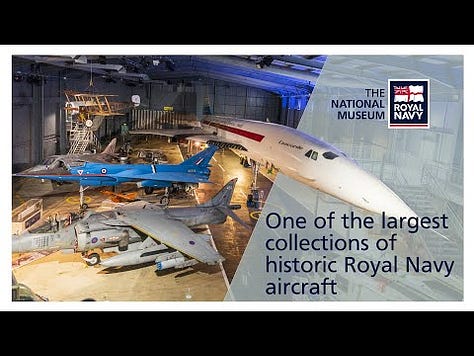


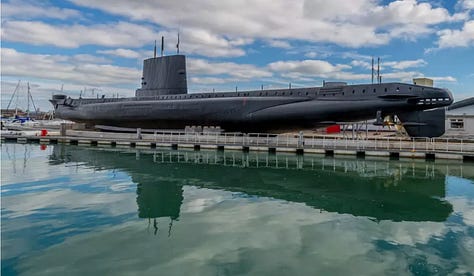
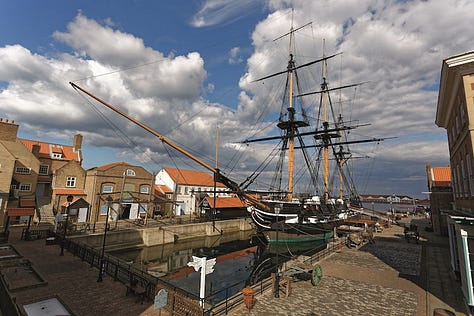
Given the size and scope of the NMRN, approaching them with a proposal from a small press thousands of miles away seemed to be a bit optimistic. After all, NMRN simply does not sell parts from HMS Victory. Rather, it seeks partnerships with like-minded projects and creators, licensing the use of the wood and their endorsement. In the case of our fine press edition of Master and Commander, the NMRN saw that Ampersand Book Studio was a natural, albeit small, partner. The NMRN team understood both the affinity between Patrick O’Brian’s effort to accurately portray life in the Royal Navy during Nelson’s time and their own efforts to convey this history to the public. Moreover, although at a much smaller scale, both our production of this edition and the careful restoration of Victory are rooted in time-honored methods and techniques used in the late 18th century. I cannot help but marvel, once again, at how generous everyone who has contributed to our edition of Master and Commander has been, and the NMRN team is no exception. From the administrators who welcomed our proposed partnership to the shipwrights who cut the wood to our specifications, it has been a genuine pleasure to work with them.
In comparison to partnering with the NMRN to secure the wood, getting it from the shipyard in Portsmouth to our studio in Tucson proved to be much more of a challenge. In addition to the logistics of getting the wood packed and shipped, there were several potential challenges to such a cross-Atlantic exchange. I had not anticipated how many regulations would need to be addressed. For example, although not listed as an endangered species by CITES (Convention on International Trade in Endangered Species), the importation of teak into the U.S. is regulated. Indeed, the importation of any timber products can be a challenge, often requiring the assistance of shipping agents, customs brokers, and licensed timber importers. Then even more questions began to arise: Would this be an import of lumber or of an antique? If the latter, would it need export certificates from any U.K. agencies set up to protect cultural patrimony? Would the fact that the wood is antique mean that it was exempt from rules governing lumber?
Thank goodness I found the team at Alban Shipping. For over three decades, they have specialized in shipping artwork and antiques between the UK and locations across the globe. Seeing some of the items they have successfully cased and shipped – from a 12-foot-long model of RMS Mauretania to the larger-than-life equine puppet for the stage show Warhorse – I knew that they were the people to handle this special shipment.
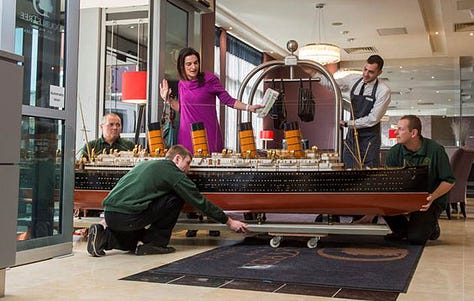

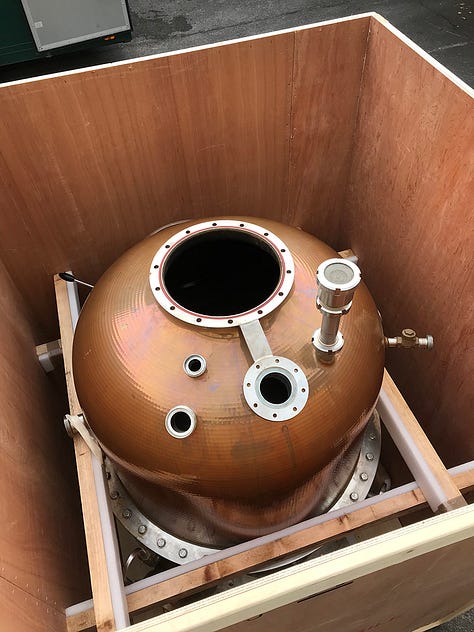
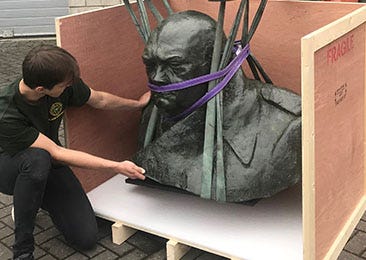

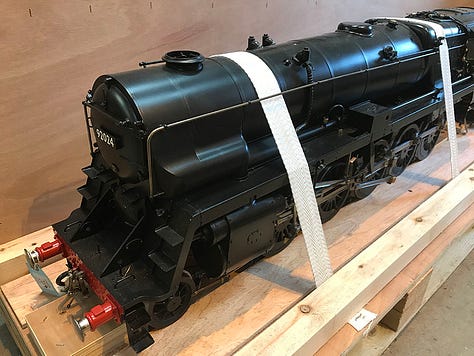
In addition to crating and shipping logistics, their team was also able to navigate the complex export and import regulations on both ends. Their expertise was essential to moving the project forward. So, a couple of weeks ago, Alban Shipping sent a van through the gates of His Majesty’s Naval Base, Portsmouth to pick up a small shipment of teak for us.
His Majesty’s Naval Base, Portsmouth
Although the Romans used Portsmouth harbor in the first centuries C.E., what we now know to be the Portsmouth ship yard was founded by King Richard I in 1194. For over eight centuries since, Portsmouth has been at the center of British naval life. The world’s first dry dock was built under Henry VII in 1495. Fifty years later, in 1545, Henry VIII’s fleet of 80 ships, led by the flagship Mary Rose, sailed from Portsmouth to face over 150 French warships sent to invade England. The French, seeking to “liberate” the English from the “Protestant tyranny” that had been imposed upon them encountered the English fleet near Portsmouth at the Battle of the Solent. While Henry VIII watched from Southsea Castle – a fortification that protected the eastern approaches to Portsmouth – the two fleets met in a rather indecisive battle. For reasons that still remain unknown, however, Mary Rose capsized and quickly sank, killing almost all 400 men aboard. In 1982, Mary Rose was raised from the sea floor, and is now on permanent display at the Portsmouth Historic Navy Yard, near NMRN.
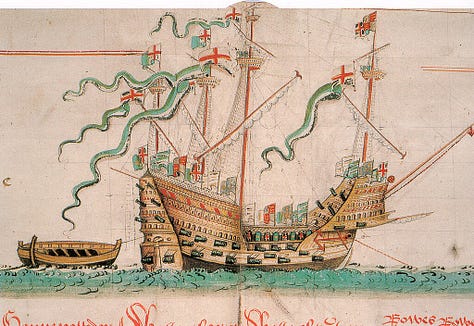
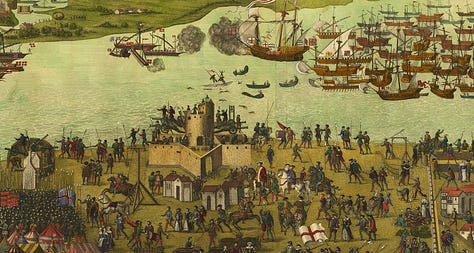

Many ships that drove off the Spanish Armada in 1588 set sail from Portsmouth. Throughout the 17th and 18th centuries, the dockyards at Portsmouth underwent a several large expansions, as British naval power was expanding across the globe.
A new rope house – a building nearly 1100ft/335m long – was completed in 1660; as the video above mentions, today it is used to house the materials being used to restore Victory.

The importance of the Portsmouth Naval Base did not diminish in the 20th century. The first modern battleship, HMS Dreadnought, was built and launched from there in 1906. In June 1944, ships and troops left from there as a part of the D-Day landings, and many of the landing craft used were built in Boathouse 4.
Today, in addition to the location of the NMRN and the Mary Rose Museum, this sprawling shipyard is home base for two-thirds of the modern Royal Navy’s fleet, including aircraft carriers, frigates, destroyers, and many smaller vessels. Over 17,000 people work there, many of whom live in barrack housing.
A couple of weeks ago, finding its way through the sprawling historic and current naval yard, the Alban team was able to pick up the teak boards that had been removed from the hull of Victory and prepared for use by us.
Alban built a sturdy crate, wrapped each and every board in bubble wrap, and less than a week after shipping it from their warehouse outside of London, everything arrived safe and sound at my desert studio.
The wood is absolutely lovely. It is rich in graining and color with lots of natural oils, a trait that makes it desirable for nautical construction to this day. And the boards show the character I hoped to see in wood with such a rich history: there are peg holes where the planks were attached and some show multiple coats of paint including the black of Jack’s beloved Nelson chequer.

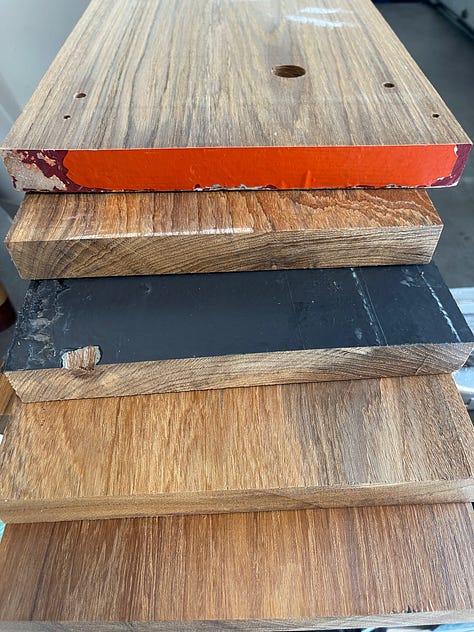

As we prepare the wood, we will seek to balance the character elements with the aesthetics of the book. Paint will certainly be removed. However, rather than avoiding peg holes, we will, instead “re-peg” them with teak or white oak. It would be a shame to loose these features and the story they tell.
End of a Chapter… Start of the Next
That is the saga that has been obtaining historic wood from HMS Victory. The entire process has take nearly a year and a half. Throughout, the team at NMRN have been a delight. Their generosity in making the wood available coupled with their commitment to the restoration and the telling of history, has been yet another example of the collaborative and creative spirit I have encountered throughout the creative process of creating our edition of Master and Commander.
Yet, the work is far from complete. The next steps will be to transform these planks into the covers of books and custom boxes to house them. I am delighted to be collaborating with some remarkable craftspeople to do that. I look forward to introducing here them soon. In the meantime, back to the studio for me!
Wishing all of you fair winds and following seas.





